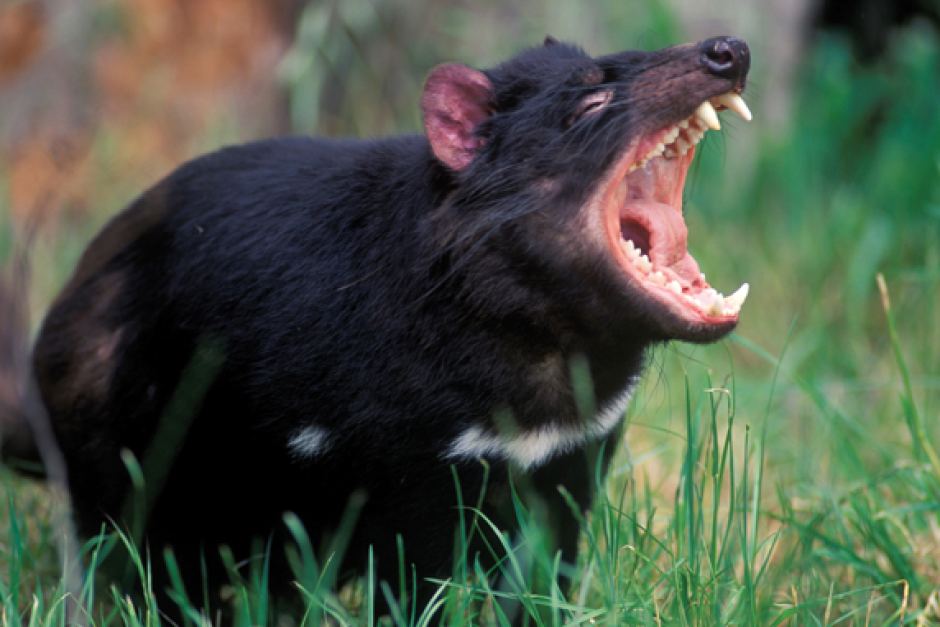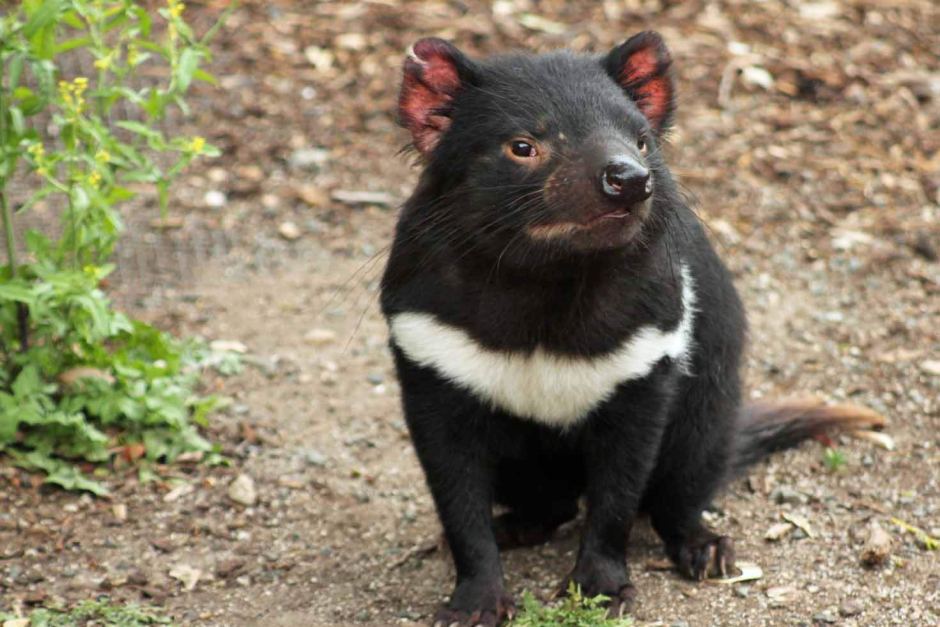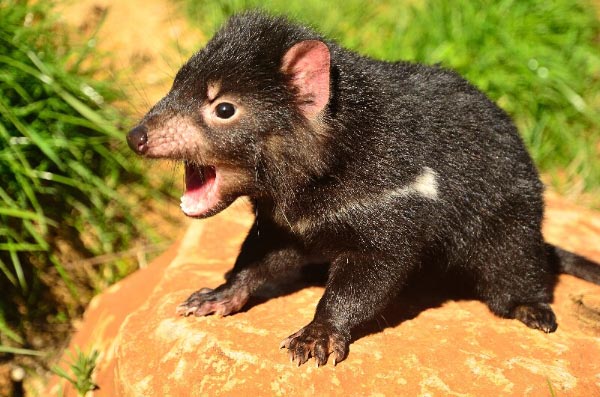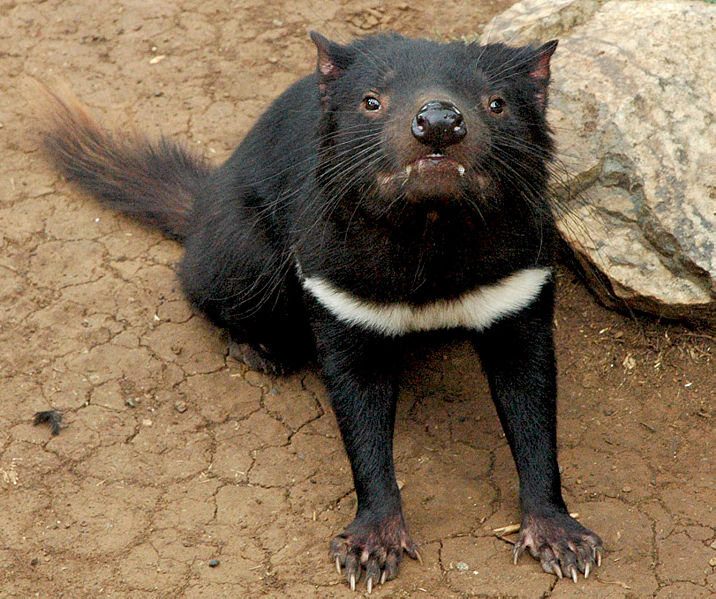
The Tasmanian devil belongs to a primitive
group of mammals, the marsupials, which are
found today primarily in Australia, Tasmania,
New Guinea, southern Mexico, Central America,
and South America. The name "marsupials" refers
to the animal's marsupium, the pouchlike
structure to which the immature young move after
they are born, becoming attached for several
months as they complete their development. The
well-known pouch of kangaroos is the classic example
of a marsupium, although it should be
noted that a few marsupials do not have pouches
and in some, including the Tasmanian devil, the
pouch opens downward. During their long geological
separation from the rest of the world, marsupials
in Australia and South America underwent
adaptive radiation, which produced an
enormous diversity of forms as species became
adapted to various habitats. As a result, many
marsupials resemble placental mammals although
they are not closely related. Thus, there are
marsupials that resemble flying squirrels, moles,
woodchucks, cats, and dogs. The Tasmanian
devil, although a marsupial, has many similarities
in structure and behavior to a dog.
Physical Characteristics
The devil belongs to a family of marsupials
known as the Dasyuridae, which are found in Tasmania,
Australia, New Guinea, and some nearby
islands. The group includes the Tasmanian wolf
or tiger, the numbat or banded anteater, and
shrewlike, catlike, and ratlike forms. The Tasmanian
devil is distinctive even within this distinctive
group of marsupials. It received its name,
"The Devil", from the early European settlers to
Tasmania, who were awed by its fierce behavior
and loud vocalizations. The devil actually is a
stocky but short-limbed animal, doglike in shape,
and only weighs between 4.5 and 12 kilograms,
standing only about 30 centimeters tall. Its dark,
mostly black color also contributes to its "evil"
reputation. The animal does have a voracious appetite.
It has a large head and very powerful jaws
with long canine teeth. The devil is the largest carnivorous
marsupial, extremely strong for its size;
it can feed on animals larger than itself, including
small kangaroos. It usually rests during the day
and seeks food at night. Its food is varied and may
include amphibians, lizards, rodents, insects, and
poultry. The devilmayprey on live
animals or may feed on carrion. Its
nightly movementsmaycover distances
up to ten miles or more. The
legs are short and the animal usually
moves along slowly, although
it is capable of running quickly for
short distances.
Early Life
As is true of all marsupials, the
young are born alive after a relatively
short gestation period-
about three weeks. Breeding usually
takes place in early spring. The
newborns travel from the birth canal
to the pouch, which is backward-
opening in this species, and
attach themselves to a nipple,where
they remain secure for about four
months.
For the next several months, the
young will venture outside of the
pouch at times and, finally, become weaned and
independent by the end of the year. Breeding usually
commences between the second and third
year. Reproduction is somewhat limited, as the
mother has only four nipples and usually more
than four young are born. It is not unusual for only
two young to survive to weaning.
The Tasmanian devil has had a persecuted
history, especially with the advent of European
settlers. Its fierce appearance, loud screeches, and
occasional predation on domestic livestock and
poultry caused it to be hunted, trapped, and poisoned
to the point of near extinction. Its value
in cleaning up carcasses was not appreciated.
The Tasmanian devil finally became protected by
law in 1941. Going from outlaw to icon, the
Tasmanian devil was selected as the symbol of
the Tasmanian National Parks and Wildlife Service.
Tasmanian devil Facts
Classification:
Kingdom: Animalia
Subkingdom: Bilateria
Phylum: Chordata
Subphylum: Vertebrata
Class: Mammalia
Subclass: Theria
Order: Marsupiala
Family: Dasyuridae
Genus and species: Sarcophilus harrisii
Geographical location: Tasmania, but formerly
was also found in Australia
Habitat: From coastal areas to the mountains, in
shrubs and forests
Gestational period: Twenty-one days, then remains
in marsupium for five to six months
Life span: Between six and eight years
Special anatomy: A powerfully built, solid animal,
with a large head, short tail, and marsupium
Other popular Animals
Photo Gallery of - Tasmanian devil








 Animalia Life
Animalia Life